Claire Napier | March 25, 2025
As fellow Journalist Hagai Palevsky and I discussed which of us might cover Crimehot—I won—the loser drew the obvious comparison to Monkey Punch’s Lupin III: high-intensity heist capers with regular diversions for sex. I say obvious, but to be fair this was in response to my comment about the cultural relief that one can find in a book that “finally” “admits” (on-page) what its genre has been implying since establishment: I was talking about the massive volume of fucking, and he, in service of Truth, was pointing out that Monkey Punch does include plenty of fucking, and of naked tits, himself. But, of course (take that), I was already talking past Lupin: If Lupin is about admitting anything about its genre, it’s making a claim on the thrill of theft as the thrill of rape. It is opposite to the claim that Crimehot makes.
 Crimehot interior page
Crimehot interior pageCrimehot distinguishes itself from previous horny theft comics by serving the purpose I mightily, and you might even say wisely, centred: it does not have any purpose but being a crime comic about chaotic little thievery capers done by horny sexy people; it differs from, for example, Largo Winch or other Van Hamme examples by its lack of non-sexual intrigue. Crimehot is a comic of hard dualism: it is about how doing chaotic little thievery capers makes people horny and sexy, and it is both specific and overt about that: these people want to have and are having sex, before during and after their heists—because of how naughty it is to do something you might be caught at. And that’s why they do the heists; to get horny and be sexy. “Sex” and “heist” are juxtaposed not as fraternal predations but as two iterations on the choice to embrace self-risk at the chance of self-gain.
There it is, page after page. In solo, partnered and group situations you see various kinds of “it” going in: undeniable pornographic sex, rather than elegant or grimey tableaus of arranged bodies connected in unseen but implicated ways. And you see the participants think and talk about how glad they are about it. For me, the exciting (die, Hagai) comparison is to Buichi Terasawa (a fan and colleague of Monkey Punch, and doubtless imperfect)—to Space Adventure Cobra and Goku Midnight Eye, where the hardboiled men wear their sexy little lycra outfits to hang out with femme fatales, sex is amazing and cool, and if you rape somebody you’re scum. Terasawa’s sexual censorship is the standard, twentieth century kind, where we see full frontal (no flaps) nudity from women and men don’t even have nipples. But he works around it and into the organic with audacious methods: heat and fluid traces showing up on body scans; elaborate exposition in dialogue. Robbins, working thirty-plus years later, publishing straight to the internet and then to a printing industry at a different point in its conservatism, isn’t bound to that rule of implication, or to that sexism. He’s explicitly bound only by his own sense of limitation, of personal affiliation with propriety. Being, by all evidence, a natural shitposter, it “makes perfect sense” for Robbins’ iteration of a trope to take it to it most overt point: here’s a fat pussy dripping wetly over how sexy stealing rare things is, because that’s what we’ve all been agreeing about since—when? 1905? 1891? 1575 or so? 1377? It’s pretty much established in the human psyche that a thief who isn’t bad is pretty hot. And, Robbins shows us plain, it’s not just zines and tijuana bibles now. We can just make absolute porno comics about that, that specifically, and see them carried for £30 in Waterstones. That’s a social audit that I believe should go firmly noted.
 Crimehot, interior page
Crimehot, interior pageTerasawa’s heist erotics are more like Robbins: essentially, they’re positive, as in “sex positive,” as in the books are in favour of happy attraction, arousal as earnest admiration, and mutually-engaged frottage and penetration, and consider sexual victimisation associated with evil. Both cartoonists dally with the non-consensual and work around, or with, it in their framing. Crimehot regularly sees our goofy protagonists captured and restrained and fucked—they just always happen to like it. It turns them on and, textually, they want it to keep happening. We see their thoughts; we see their dialogue; more than once, a character, facing sexual onslaught and attempts at victimisation, will turn to the reader and giddily assure them that the joke is on the assailant: I want this, actually. They’ve turned themselves to my service. Lol. Robbins’ sense of comedy relies on causing dysfunction in the enemy: disrupting the “normal” modes of shame or humiliation. Nobody rapes anyone in Crimehot because rape has no power there; evil intention makes no dent in the characters’ furious pursuit of sensation and absolute self-inhabitance. They are never afraid, they are never dismayed. The house always wins, and Crimehot is where horny idiots live. Enemies are reduced to simps by their intended victims simply being too fabulous, too cheerfully aroused, too at home in themselves. “Look at you! You like it, don’t you?” asks an evil prison warden. “Yes. Duh,” replies our protagonist, Haze. Robbins’ approach to the titillating power of power play is to set its—that is, play’s—acceptance as cost of entry: desire for pleasure is present in the text as part of the bit, where Lupin III relies on disregard of consent as part of the bit.
 Lupin III, interior page
Lupin III, interior pageTerasawa’s rape scenes aren’t made into scenes in the modern style that Robbins employs, but are considered serious crimes by his heroes and exist in contrast to the pleasure sex enjoyed by characters. Somehow this makes both experiences realer in themselves. In fact, sometimes they exist in tandem: during a Streets of Fire riff in Goku Midnight Eye, a singer has been kidnapped and brainwashed. Now she leads a criminal biker gang who live in a discarded underground train, and likes to fuck them. This is seen on the page; it’s an erotically presented moment—and the eroticism of her body in situ, in action, cannot be detached from how smug and satisfied she appears to be. In this other identity she is wicked and fully cognisant of her actions. It is textually a rape scene, marked down a crime and avenged within the motion of the plot, but immediately a sex scene. It tells us the character has been the subject of rape, reiterating negativity towards rapists, but doesn’t oblige her to a suffering sexual image. One may be reluctant to give a man too much credit regarding their ability or motivation to reframe women’s victimhood—but as rhetorical work, I find this effective. Crimehot is not a book that attempts to incite a dialogue on rape at all (and Robbins is not a creator who attempts to retain much claim on the finite identity “man”) but by going to such lengths not to it places itself within the real dialogue about sex: that sex exists in a world that also contains rape, and as long as it does we will find ourselves working to reclaim the field for the former. Happy horny comics, happy pornography, cannot be neglected for their power to help us do this.
 Crimehot, interior page
Crimehot, interior pageTerasawa and Robbins have a second, parallel similarity, also directly about illustrated sexuality. Terasawa’s greatest book was Cobra, which ran eighteen collected volumes against Goku Midnight Eye’s three (or four for the US market), Takeru and Kabuto’s two. Fan as I am, it outshines them all by miles and the reason is in his leading men: Cobra’s face was made for cartooning, and everybody else’s for beauty.
 Goku Midnight Eye, interior panel
Goku Midnight Eye, interior panelCobra used to be a gorgeous, suave space pirate. Then he got into this or that too deep, and had to disappear. He not only cut himself off from his old life and memories, but changed his face and became a whole new man. Cobra’s “new” face (the only one we ever really see him use) is modelled on Jean-Paul Belmondo: curly ruffled hair, lopsided lippy mouth, indication of eye bags, big snout. That is, he has a face for acting—for expression. For cartooning! In the linked interview Terasawa talks about enjoying not only the actor but the script and direction of Belmondo in Breathless, meaning whenever he looked at his own character design for this book he was being resonantly inspired by Godard’s atmospheric sensibilities as well as a real, moving human. Goku, Kabuto, Takeru—these are far less specific men. Their features don’t fill up their faces the same way. They have essentially the one face between them, as is commonly seen from life-career cartoonists. That’s not a problem in itself; it’s a matter of signature. But the signature here is inferior to the one that he used in the past: Cobra hits harder because he emotes more freely; his horny pratfalls and cheerful ogling come with the essential self-sacrifice of dignity and reserve that “being a goof” represents. The later protagonsists still have kind eyes, and mischievous senses of humour—but! A nice and goofy face is a leveller conceptually, for a male character amongst myriad lady babes, and, as if to assert an essential truth, it has the same freeing action upon the psyche of its author. Cobra is a buoyant book because of how its hero moves, and how that is in tune with his generosity of spirit. Goku Midnight Eye, despite being very evidently the work of the same mind, the same Steinman-adjacent sensibility, cannot match it for mood. It’s not as fun.
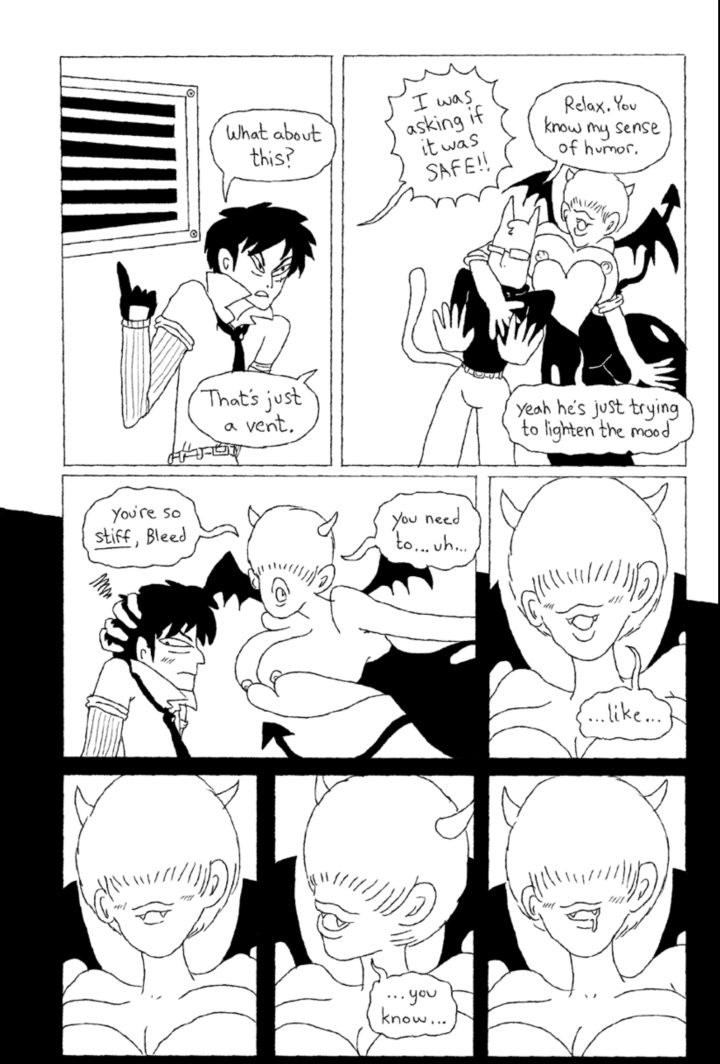 Crimehot, interior page
Crimehot, interior pageThe funness of sex and sexiness is important to Crimehot. Robbins uses the Belmondo gambit freely. Main character, Haze, is a little freak in a bodysuit that covers even more than Cobra’s, and more tightly, making her two primary characteristics “face” and “sex person.” That face is weird: pointy stick nose, individually-outlined teeth in a wide shark’s mouth, lines to show where the flesh is creased by her expressions. Body parts are also subject to this expressive cartoonification, versus various other modes of depiction: voyeuristic anatomical “realism,” horror impact, kitchen sink realism, and so forth. Go Nagai sneaks in, perhaps—big, round, pomegranate, fit-to-bursting breasts that have never heard of gravity; massive cocks that would approximate childbirth. They are goofy in their over-presence and childish, basic communicative properties: these things are drawn with one basic intention: to be horny. Not—vital—to look hot—to be horny. You press your breasts against someone you want to get hard. It’s dark. It’s not about looking like a Gravure card, because nobody can see you: it’s about being horny. You have sex with your real human body and it looks less than perfect but it feels horny to the max. It’s funny. Robbins is working somehow with an invisible aesthetic… a look beyond looking. He’s pressing the big button marked SEX, achieving the illustration of experience in a way that doesn’t presume to become an aspirational aesthetic in its own right. Crimehot character designs are a code for “yaay, slutty!” long before they are a watermark for how someone should look if they hope to ever have sex. They present “doing.”
 Crimehot, interior panel
Crimehot, interior panelThis is another of those fourth wall-breakers, in fact! Haze leans out and tells you that the great big tits in this story aren’t about the supremacy of big tits, they’re—this is me now, extrapolating—about the feeling that’s been hidden just behind “big tits” by decades (and more?) of cultural tit image manufacture. Like how all of our swears are words that mean things that aren’t what we mean when we say them as a swear—it’s sight magic on the mental plane. Can you tell someone to fuck off, with all the available impact and potential vitriol behind it, without saying fuck? But we like to fuck. You see what I mean. It’s the same way that Cobra, by being goofy-faced but never insecure, shrugs off how he’s hot enough to just be hot because he outweighs it by being hot—that’s character, that’s texture… that’s evocation of a real relationship. That’s good cartooning. It’s about arranging things imperfectly enough that the audience can take the leap to real clarity.
 Crimehot, interior panel
Crimehot, interior panelDespite all this hidden subtly, being overt—”actually saying it”—is the mission and the message. The “actually” is the button issue: Crimehot is audacious because audacity is available in the relentless implication and sidestepping of normal society. It fills in potholes in a large road we are all using, and says HEY, LOOK WHAT I JUST DID! I FILLED THIS POTHOLE! WITH MY CUM! It couldn’t do that, and wouldn’t be inclined to do that, if the potholes weren’t there and if they weren’t something multitudes find ourselves getting used to. Crimehot opens with heterosexual coupling, and maintains a heterosexual aspect throughout, preventing the heterosexual milieu from rejecting its reflections or disregarding its presence. It exists firmly: it is a pausing point in the genre continuum, in the gendered continuum, in the sexual one. It is here to pester, and provoke. Because things “as they are” just aren’t right. Even Cobra could have been slightly better! I want to see his dick!






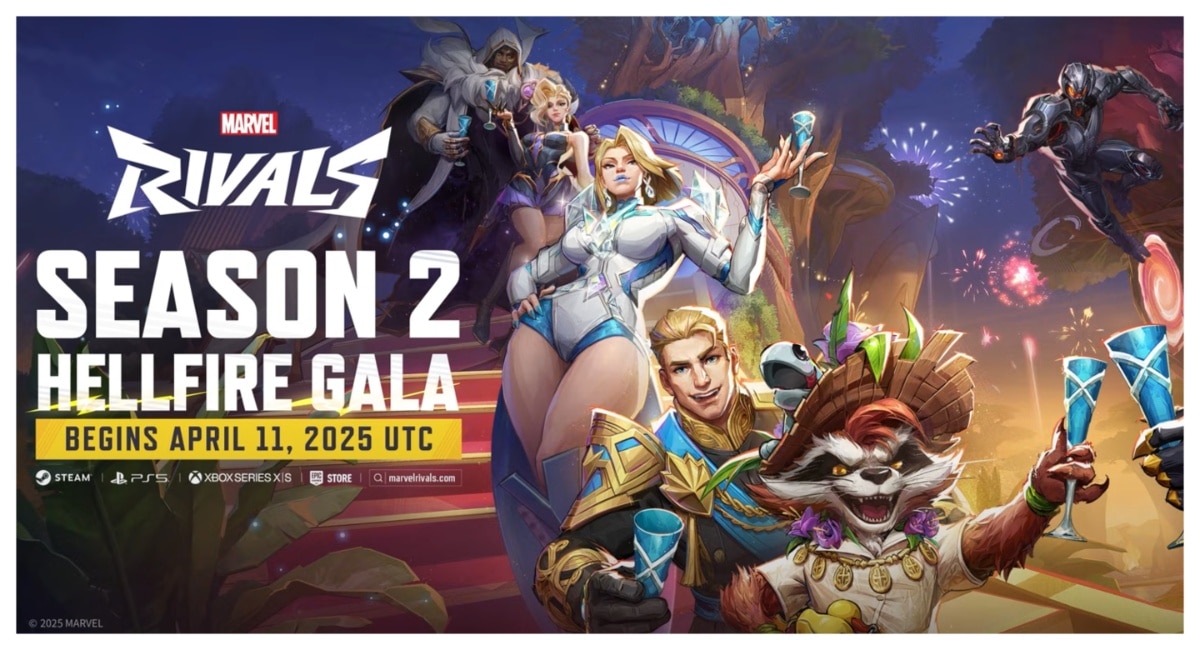
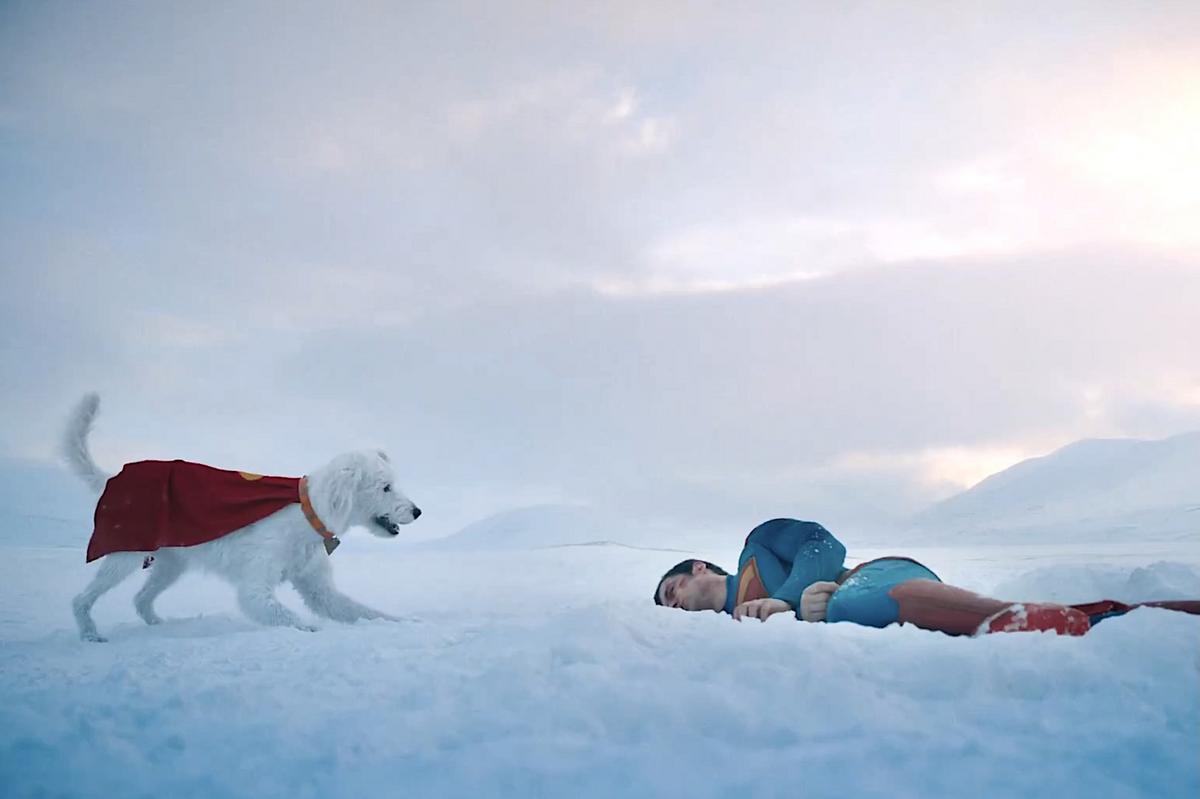

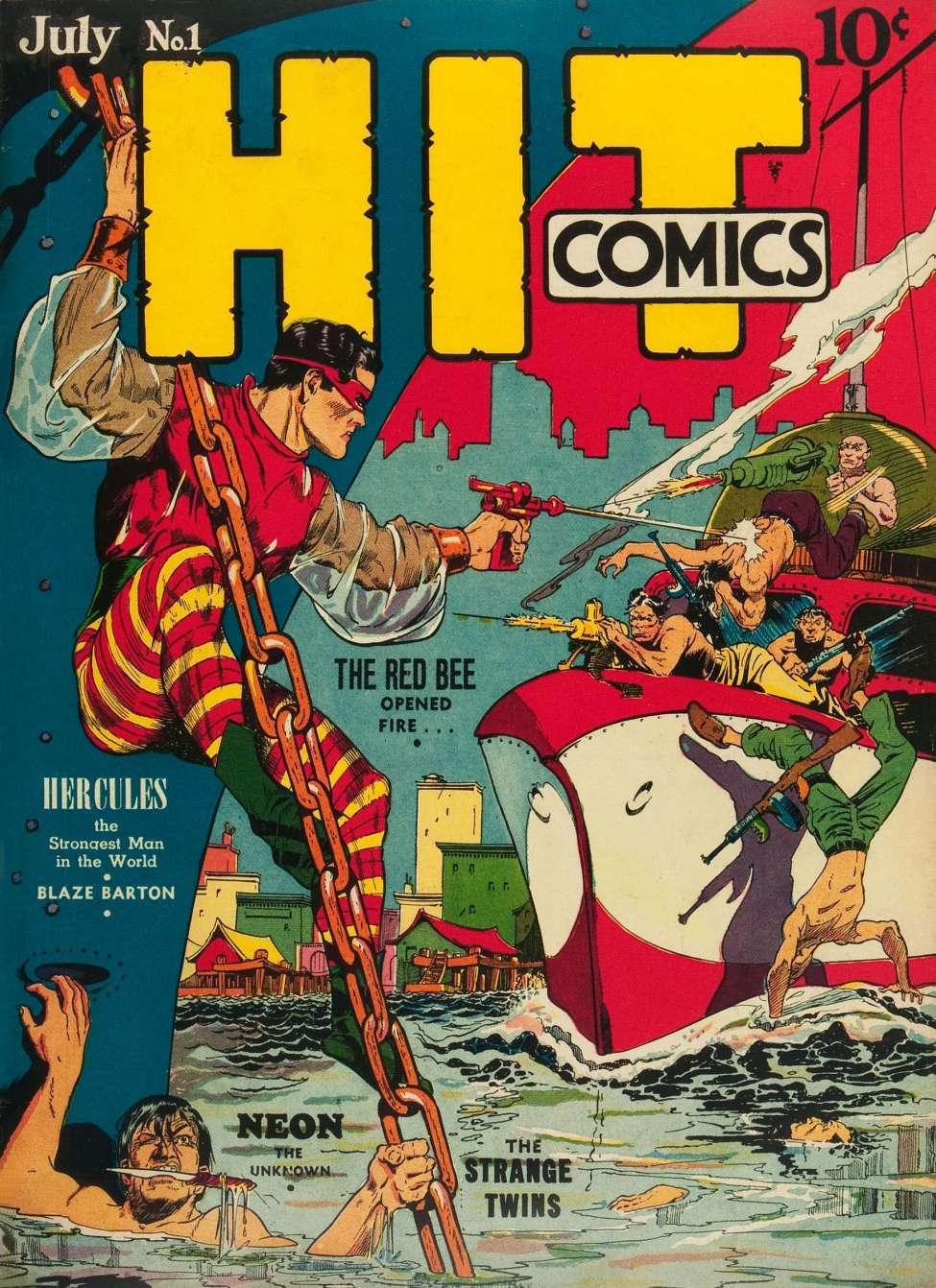

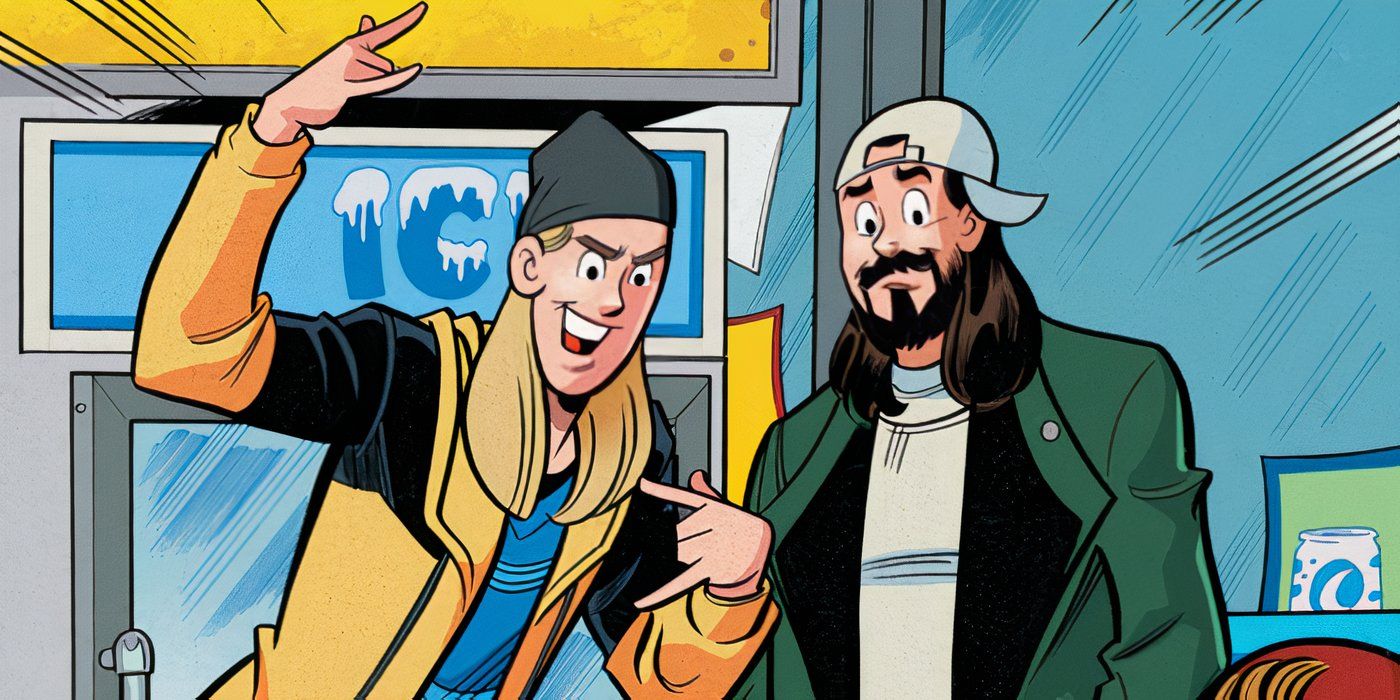


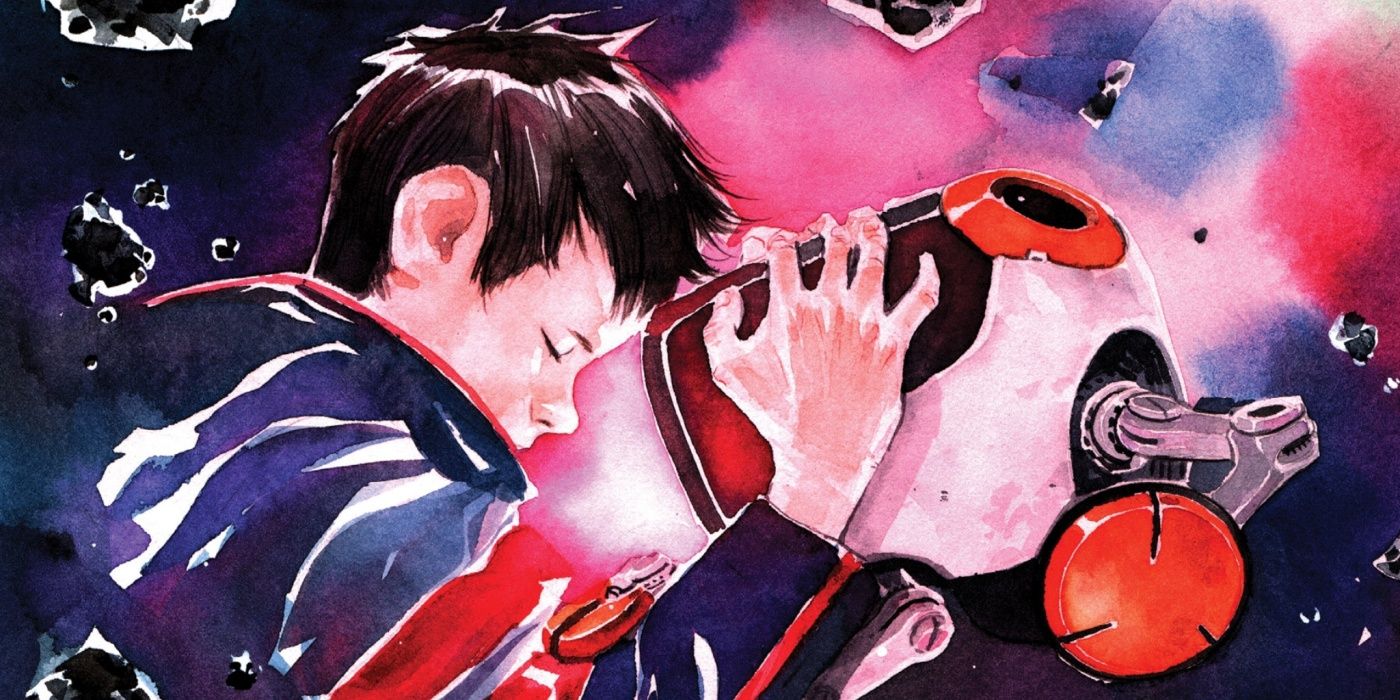

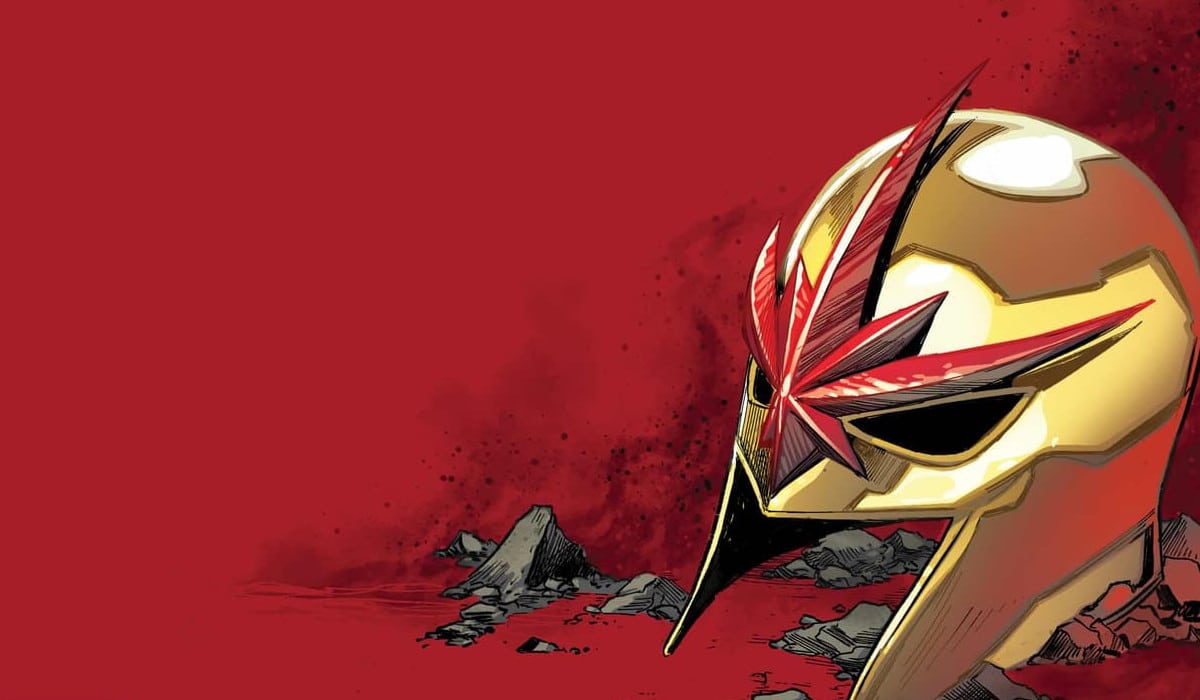
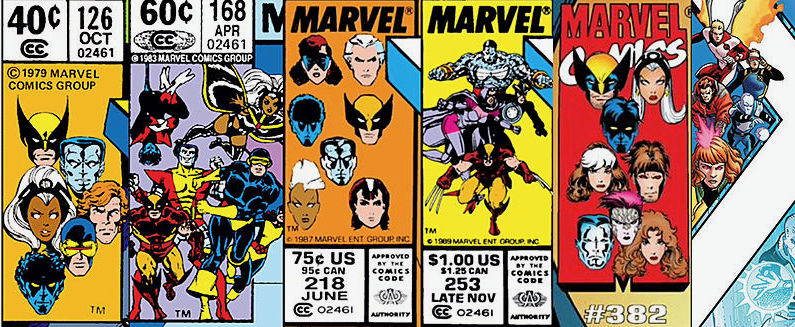


 English (US) ·
English (US) ·